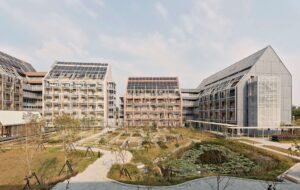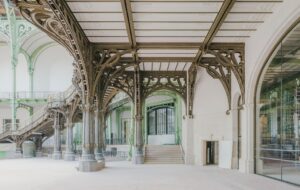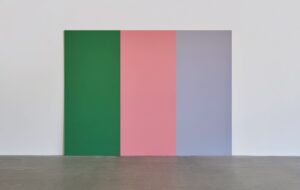|
|
||
|
The mysterious process of designing seems to fascinate writers, but rarely do they manage to write about it without collapsing into cliche: presenting their protagonists either as contemporary demi-gods or ridiculous egomaniacs. The famous novels about architects reveal a parade of laughable stereotypes, wrought from the imagination of writers who read too much Nietzsche in their adolescence and understood only the uninteresting stuff. The most notorious example, perhaps, is The Fountainhead by Ayn Rand, allegedly based on the life of Frank Lloyd Wright, today curious mostly because of its camp mannerisms. The question is: is it possible to write honest fiction, itself a fantastic tool of exaggeration and myth-making, about something that is already so mythomaniac? In Perfect Architect, her second novel, Jayne Joso tries to deal with the subject while keeping an admirable balance between the two extremes of cliche. She clearly enjoys using humour, and even caricature, to flesh out the starchitects who populate her novel (one, elucidating on his work as “sensual architecture”, declares that buildings should “connect with the same number of senses any good person might possess, and more!”). But somehow she also remains honest and respectful to them, telling the story through the eyes of those who accompany architects: “their” women and people, who are fascinated by, and try to understand, them. Joso uses all the devices of modern fiction to render the elusiveness of designing, and to explore the curious role played by these contemporary equivalents of court artists – combining the greatest cultural impact with the greatest pretension. When Charles Ore – or as the media call him, “The Architect of the Age” – suddenly dies in his forties, after choking on a piece of eel, his wife Gaia (and here a playful retelling of the Greek myths begins) discovers an intimate lifelong correspondence between her husband and another woman, Selené (goddess of sleep in the mythology). Gaia quickly realises that reading other people’s letters has a tendency to drive you crazy, and she finds herself writing back to Selené, effectively adopting her husband’s role in the exchanges. Selené is older and wiser, as well as profoundly selfish and condescending (“Dearie dearie me, your pain is almost palpable!”). She also shared Charles’ fascination with his work (and massaged his gigantic ego), and teaches the naive Gaia about her husband and his passion for architecture. What about the architecture itself? The key event of the book is Gaia’s announcement, inspired by Selené, of a competition to design her “perfect home” (to replace the house Charles built for her, a structure of concrete units he called The Construct). This proves a delicate yet aching parody of contemporary architectural competitions – everybody wants to design a house for the wife of The Architect of the Age. Four internationally renowned architects are invited to compete for the commission, and Joso joyously describes their styles and characters. Readers will no doubt speculate over the real-life inspirations for the fictional Carlos Santillana, Alessandro Cannizzaro, Edwin Ray or Ralph Coover. It’s clear that Joso did her research, and there are some wonderful parodies here: Ray, the British grandee who “as one of the world’s greatest architectural intellects, and as a stout and proudly heavy-set man, knew how intimidating the press could find him” (and who likes to work in “translucent concrete”, my favourite material in the novel); and Santillana, who can only be distracted from ranting obsessively about “transient architecture” by his wife’s heavy cooking. The name of Coover – recalling the American postmodern writer Robert Coover, who specialises in elaborate parodies and disrupting myths – is perhaps revealing. Joso mocks the pretension to perfection, but deflating mock-heroic characters is not her primary aim here. There are echoes of a Thomas Mann-style Künstlerroman – charting an apprentice’s growth to maturity – in Gaia’s relationship with both Selené and the architects, captured most clearly in the closing scenes. Ray, Santillana and the others have their pomposity pricked but they are also worthy of our esteem, freeing Joso to ponder the question: can art and excellence redeem all the venality and vacuousness? While the novel may not offer a clear answer to this problem, it is an illuminating read – certainly more translucent than concrete.
|
Image Perfect Architect
Words Agata Pyzik |
|
|
||
















